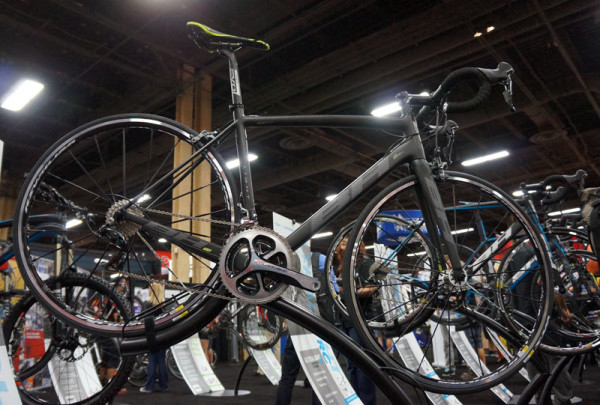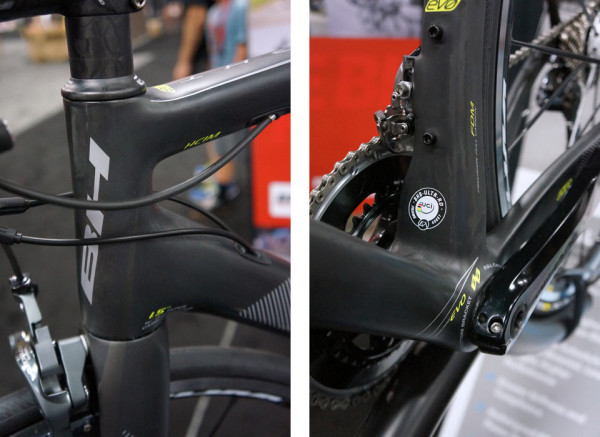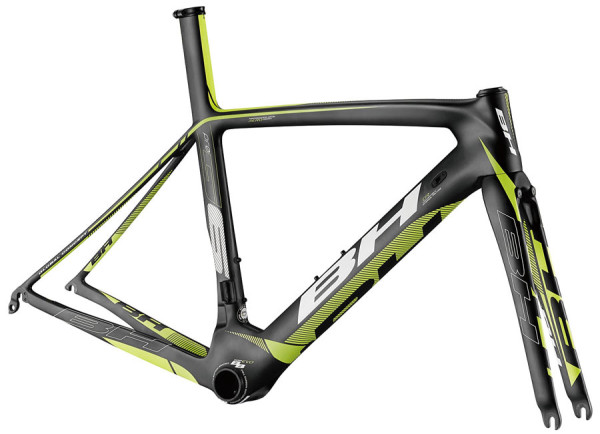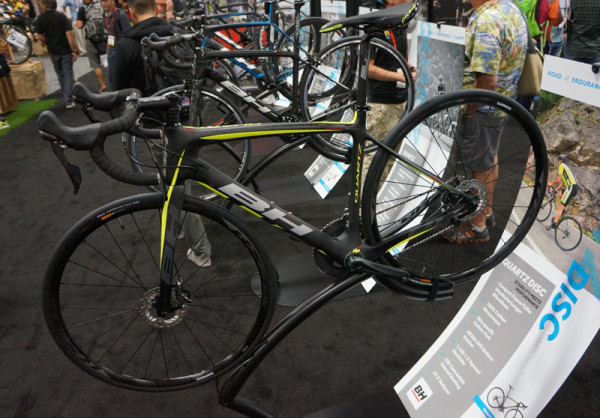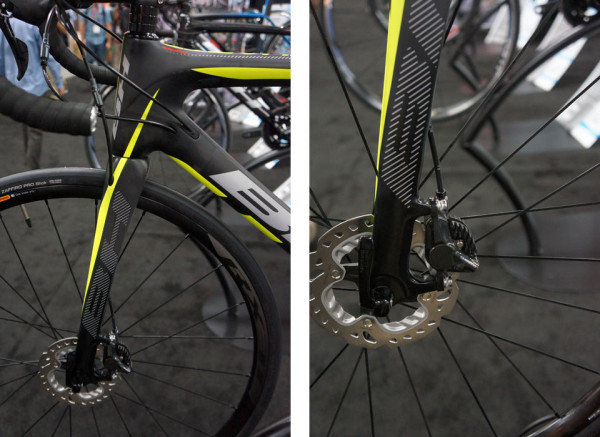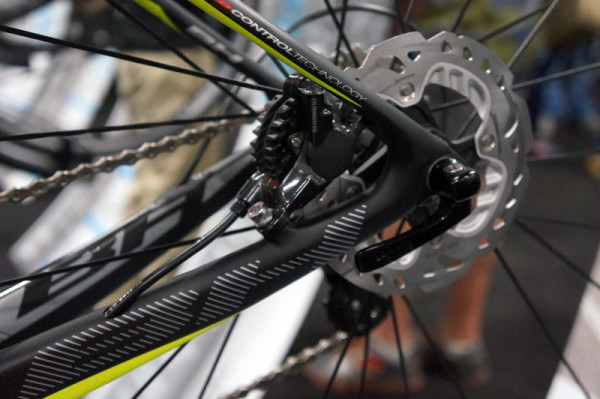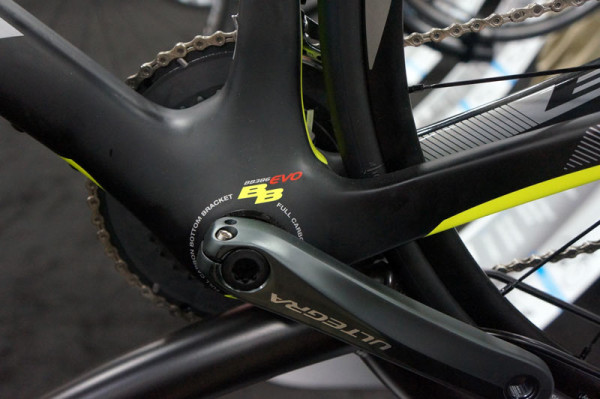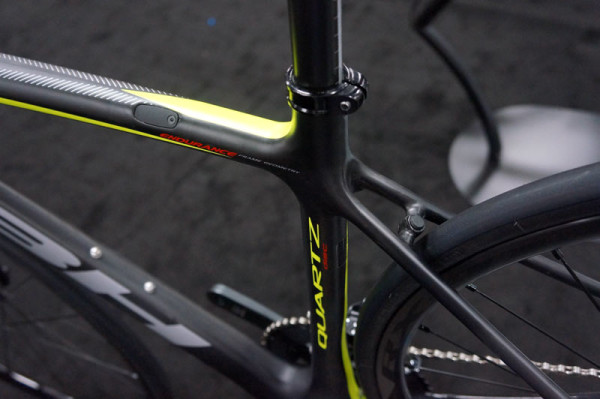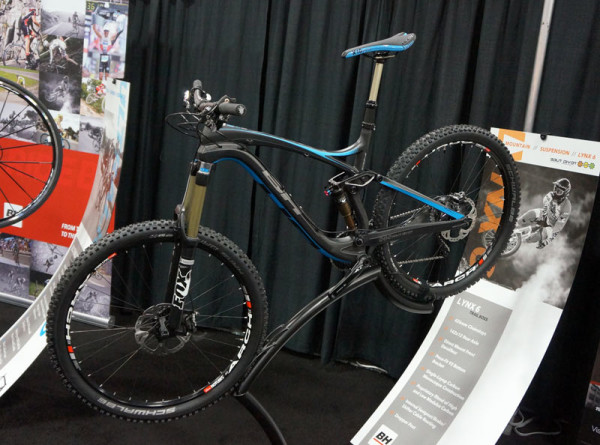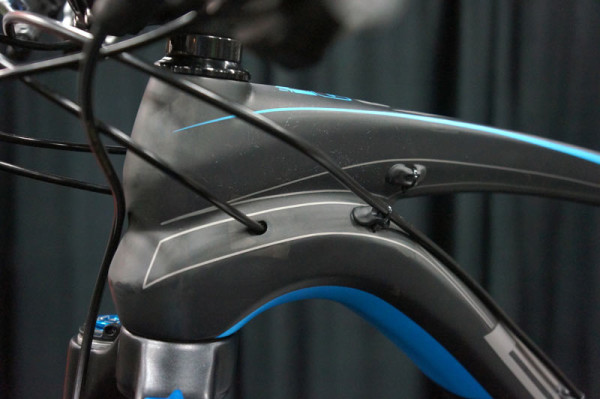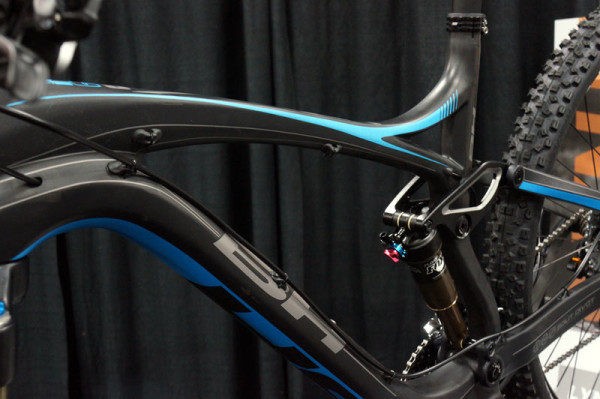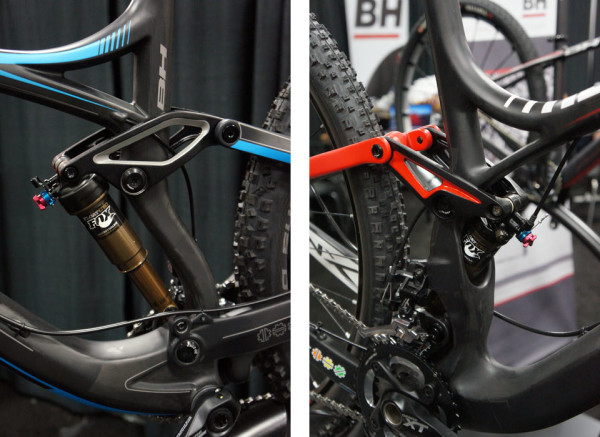When BH introduced the Ultralight in in 2011, it ushered in the BB386EVO bottom bracket and a then-insanely light frame. Building up a 10.66lb complete bike didn’t hurt, either. As the years progressed, they introduced a more affordable and only slightly heavier Ultralight RC, which carries over unchanged for 2015.
But, the top of the line is the updated Ultralight Evo with a new carbon layup that makes it even lighter. Last year it was 750g, for 2015 it’s averaging 690g. And it has no rider weight limit and comes with a limited lifetime warranty.
Beyond lightening up, they tweaked the frame to make it a bit more comfortable and improve clearance around the bottom bracket for power meter equipped cranksets.
(UPDATE: Clarification on the Quartz Disc frame added below)
The front derailleur mount is now full carbon, which they say is stiffer than a riveted alloy mount, leading to crisper, quicker shifts.
The aero G6 Pro race bike also gets a slightly different layup so it’s lighter and stiffer, gets the new integrated carbon front derailleur mount and FD mount and integrated Di2 battery mount in the seatpost. They switched the brakes to Shimano direct mount to further improve aerodynamics. That change also made for better braking and a stiffer rear triangle.
The Quatrz is BH’s endurance/gran fondo road bike, and for 2015 it gets a disc brake version. The Quartz Disc gets a disc specific frame with a new fork that routes the front cable/hose through the leg. Two builds will be offered, a Shimano 105 with TRP Spyre mechanical brakes ($2,599) and Ultegra with hydraulic brakes ($3,599).
Rear brake runs a cleanly executed hose layout with just enough room to accommodate a variety of different calipers. They’re sticking with quick release front and rear for now.
The Quartz gets mild aero shaping on the downtube and also uses the BB386EVO bottom bracket. Frame weight is 850g on average.
We’re waiting to hear if the disc frame retains the standard rear rim brake routing and mounts or if this was a pre-production model for the shows.
UPDATE: They will remain. BH created a disc specific fork but retained parts of the frame mold used on the non-disc version. So, there will be the cable ports on the top tube normally used for the rear rim brake, but the the brake bridge mount can double as a fender mount.
Their cyclocross and triathlon bikes carry over unchanged save for spec.
The Lynx 6 is completely redesigned for 2015. It’s a 650B Enduro bike with 6″ of travel using Dave Weagle’s Split Pivot rear end. For 2015, the frame is now all carbon, no more alloy rear end.
A shaped, tapered headtube helps keep the front end stiff, and a mix of internal and external routing covers everything from remote rear shock to remote dropper posts.
It also gets internal routing for a stealth dropper post. The Split Pivot design puts the rear link concentric with the rear axle, then the shock is floating between the upper linkage and chainstays.
The new Lynx 6’s suspension layout is on the left. Compared to the prior version, it does away with the interrupted seat tube of the Lynx 4.8 (red, on right), which is a 29er only. I test rode the Lynx 4.8 at DealerCamp last year and was very impressed with its performance on both descents and climbs.
